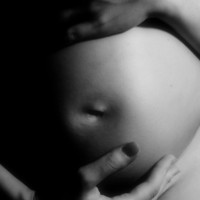
Postpartum Psychosis Basics
Roughly one or two out of every 1,000 new mothers in the US develop postpartum psychosis, Massachusetts General Hospital’s Center for Women’s Mental Health reports. Some women first experience symptoms of the disorder as soon as two or three days after giving birth, and the majority of PPP cases begin within a two-week period following birth. However, some cases don’t arise until several weeks or longer after delivery. Common indications of psychosis in women affected by PPP include the presence of staunchly defended but objectively false or bizarre thoughts or beliefs (i.e., delusional thinking), sound-based or visual hallucinations, severe mood swings, paranoia, sleep disturbances, and a prominent lack of mental clarity. In their most dangerous form, the delusions and hallucinations associated with postpartum psychosis center on fixations with suicide or killing a newborn infant. In order to prevent the real-world actualization of these fixations, doctors treat all cases of PPP as emergency situations.
Bipolar Disorder Basics
Bipolar disorder is the common term used to describe four different mental health disorders, known individually as bipolar I disorder, bipolar II disorder, cyclothymic disorder or cyclothymia, and bipolar disorder not otherwise specified (abbreviated as BD-NOS). When most people think of bipolar disorder, their conceptions commonly match up with the symptoms of bipolar I disorder, which include periods of an abnormally elevated or aroused state called mania, as well as periods of the profoundly downcast emotional state called depression. In addition to clear periods of mania and depression, people affected by this disorder also frequently experience “mixed” periods that feature aspects of both mania and depression. People with bipolar II disorder experience unmixed periods of depression and a relatively subdued form of mania called hypomania, while people with cyclothymic disorder experience alternating periods of hypomania and mild depression. People with BD-NOS have combinations of bipolar symptoms that don’t easily fit the definition of any single bipolar disorder.
Bipolar Disorder’s Roles in PPP
As previously stated, preexisting bipolar disorder is a known risk factor for the onset of postpartum psychosis; a family history of bipolar disorder imparts the same risk. Also as previously stated, the presence of PPP in a new mother may act as the first indication of a new case of bipolar disorder. Whatever the precise connection between the two disorders in any given circumstance, most cases of PPP are related to bipolar disorder in some way. Usually, bipolar symptoms in women with postpartum psychosis mirror the effects of bipolar I disorder which, as we’ve seen, can include separate periods of mania and depression or mixed periods that include features of both of these extreme mental states. Usually, these bipolar periods are preceded by warning signs such as sleeplessness, restlessness and a level of emotional irritability that’s out of character for the affected individual.
PPP as a Risk Factor for Bipolar Disorder
In the study published in the “Archives of General Psychiatry,” a group of Danish researchers examined the long-term psychiatric histories of more than 120,000 mothers. In particular, they focused on women in this group with combined histories of postpartum depression and bipolar disorder. After making a series of statistical analyses, the researchers concluded that almost 14 percent of women who develop postpartum psychosis within 30 days of childbirth go on to develop bipolar disorder within a 15-year period of time. In contrast, only slightly less than 5 percent of women who develop postpartum psychosis 30 days to a year after childbirth go on to develop bipolar disorder in the same timeframe. After 22 years, the rate for bipolar disorder in women who develop PPP in the month after delivery jumps to 19 percent. In the same 22-year timeframe, the rate for bipolar disorder in women who develop PPP one month to year after delivery only rises to 6.5 percent.
